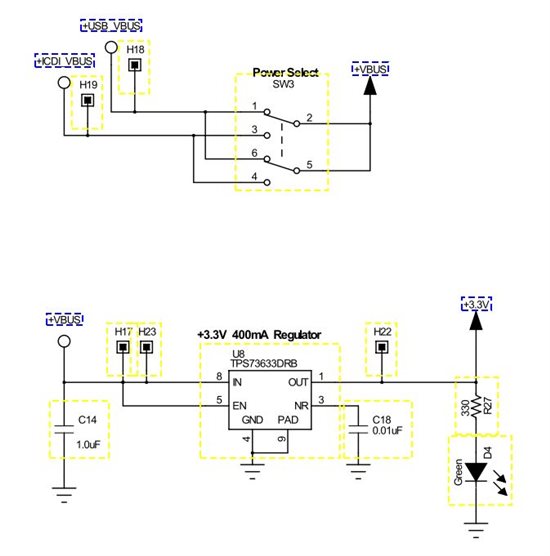Hi!
I'm developing an autonomous application with the Tiva C Series TM4C123G LaunchPad.
I have a 6,6V Battery that is stepped down to 5V with a 7805 linear regulator.
I'm thinking about connecting this 5V to the VBUS connector via its pin:
But I saw also the schematics in this Launchpad user guide and it is not clear:
I'm nearly sure that in case that this is possible, it's better not connect both USB power and battery as this can damage the USB output.
So my question is: is it possible to connect a 5V battery directly to the Tiva C Series TM4C123G LaunchPad?Thanks!
Kind regards,
Francisco



